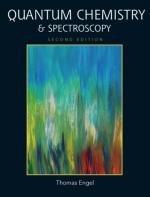|
This section contains 632 words (approx. 3 pages at 300 words per page) |

|
Anyone who has ever used a prism to split a beam of light into its component colors has, to a small degree, practiced spectroscopy. Widely used in the study of radiation, spectroscopy is based upon the principle of separation of light according to its frequencies, or wavelengths. In our prism example, the many frequencies within a beam of white light are dispersed, revealing a spectrum. By examining which colors within that spectrum are brighter or dimmer, a scientist can obtain information about the source of the white light.
Although many scientists (including Isaac Newton) had experimented with prisms, it was the physicist Joseph von Fraunhofer (1787-1826) who first applied spectroscopy to analytical science. While examining some rather outmoded lenses, he discovered that the spectrum of the Sun 's light, until this time thought to be continuous, was actually interrupted by hundreds of dark lines. His contemporaries claimed that...
|
This section contains 632 words (approx. 3 pages at 300 words per page) |

|


